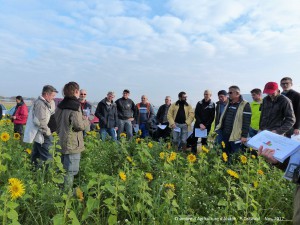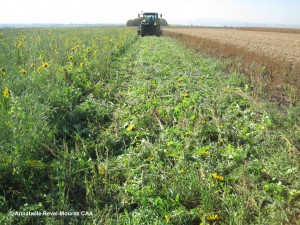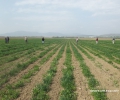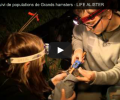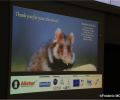LIFE Alister finances a ‘roll-crusher’
31 janvier 2018The company CUMA de la Plaine, which is open to farmers in the European Hamster strict protection zone, has just purchased a new machine that was demonstrated at the beginning of November. The equipment was financed by the LIFE Alister project.
A ‘roll-crusher’?
Nitrogen-fixing catch crops are an integral part 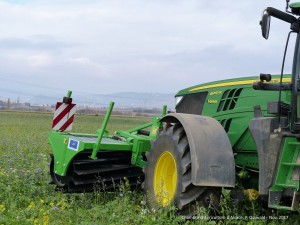 of the studies for actions to protect the EuropeanHamster carried out by all the partners of LIFE Alister. These green fertilizers sown after harvesting hold various advantages for the animals: they provide food and protect the hamsters from predators. These intermediary catch crops also have many other benefits: they improve the soil structure, protect soils against erosion and help make them richer in organic matter. When managed well, they are a real boon for biodiversity as well as farming.
of the studies for actions to protect the EuropeanHamster carried out by all the partners of LIFE Alister. These green fertilizers sown after harvesting hold various advantages for the animals: they provide food and protect the hamsters from predators. These intermediary catch crops also have many other benefits: they improve the soil structure, protect soils against erosion and help make them richer in organic matter. When managed well, they are a real boon for biodiversity as well as farming.
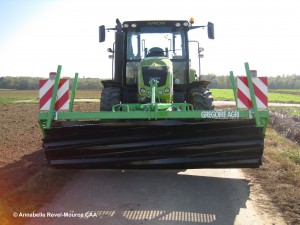
So, what’s the problem? The greatest risk is if these crops go to seed and compete with the candidate crop the following spring. Consequently, there must be a way to kill them off without using synthetic products; this is when the ‘roll-crusher’ becomes useful. This machine flattens and crushes the plants, making them more sensitive to frost and enabling them to be destroyed naturally during the cold weather. Leaving the organic waste on the ground also encourages richer soils through increased organic material.
A tool to complement agronomic trials
14 farmers tested different mixes of nitrogen-fixing catch crops. The species chosen when making up the mixes took the needs of European Hamsters into account (CNRS food study). As can be seen in the photos, the plant cover grew to a good height!
In terms of biomass production, the initial results highlighted the advantage in planting the nitrogen-fixing catch crops early as they gained from the added benefits of higher temperatures and rainfall. Despite the fact that rainfall was 10% lower than normal in Alsace, the nitrogen-fixing catch crops sown before 25 July had a greater biomass (up to nearly 50% more for Mix 1!). This is also an advantage for the European Hamster as the ground remains bare for a shorter length of time after the harvest.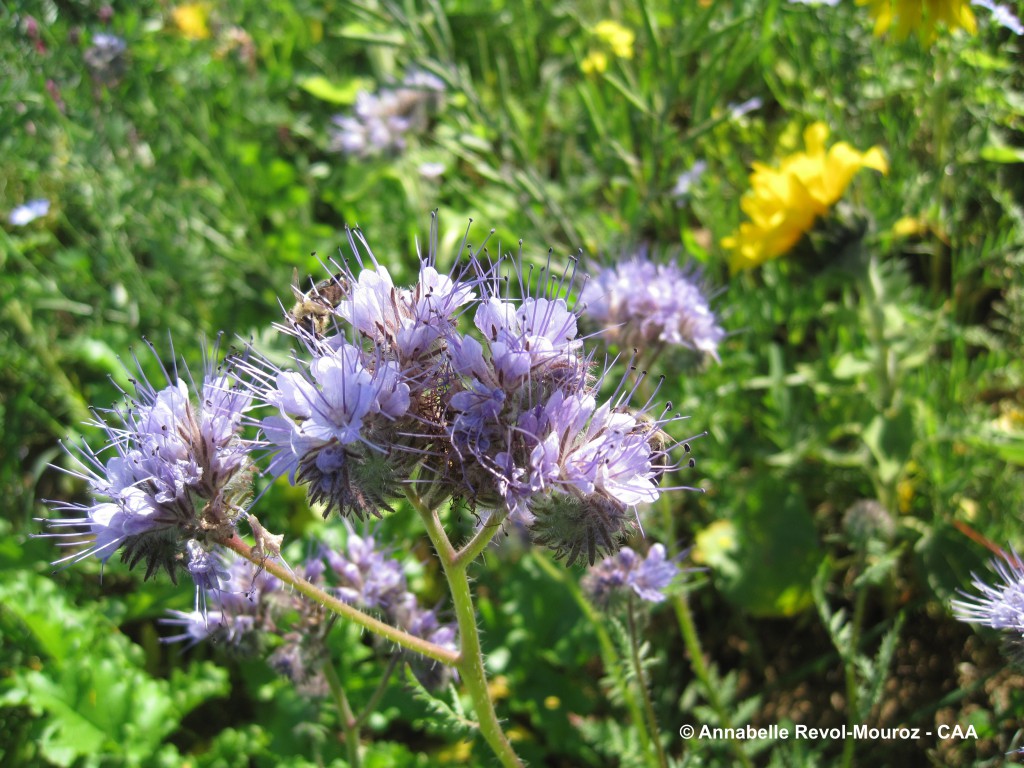
Phacelia (present in Mixes 1 and 3)
Initial conclusions of the experiment
- The earlier the nitrogen-fixing catch crops are sown, the greater the biomass production, as the plant cover that was sown earlier gains from the added benefits of higher temperatures and rainfall. This trend is even greater with Mix 1, and not as marked with Mix 2.
|
Mix 1 |
Mix 2 |
Mix 3 |
|
Sunflower, black oat, common vetch, phacelia, field pea, Egyptian clover, field bean, grass pea, Oriental radish 25kg/ha |
Sunflower, black oat, common vetch, crimson clover 50kg/ha |
Sunflower, linseed, black oat, rye, purple vetch, hairy vetch, Egyptian clover, crimson clover, brown mustard, phacelia 30kg/ha |
- The tilling technique (harrowing or direct sowing) does not appear to have affected the rate of growth of plant cover, though harrowing did seem to encourage weed growth compared to direct sowing.
Further analyses of the plant cover will yield information on the minerals present in the plants.
For information, the updated table records the average biomass on 12/10/2017:
| Sowing period | Mix 1 | Mix 2 | Mix 3 |
| Before 25 July | 1.9 t DM/ha | 1.3 t DM/ha | 2.3 t DM/ha |
| After 25 July | 1.0 t DM/ha | 1.2 t DM/ha | 1.4 t DM/ha |
A demonstration morning was organised by the Alsace Chamber of Agriculture on Friday 3 November 2017. Some of the ‘2017 early-sown nitrogen-fixing catch crops’ on experimental plots in Dorlisheim and in Griesheim-près-Molsheim were shown to the farmers who attended.

